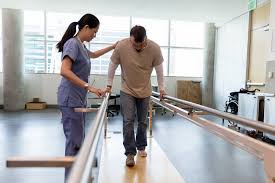A deep dive into how physical rehabilitation is becoming the go-to solution for chronic pain—without the pharmacy. If you’re looking for a smarter, long-term way to deal with pain, it’s worth checking out places like Copper Wellness—an integrative clinic in Chicago that’s doing things differently. No endless prescriptions. No band-aid solutions. Just real recovery, built on movement, care, and integrative medicine.
More and more, people are realizing that painkillers aren’t a cure—they’re a pause button. And eventually, that pause runs out. What used to be a standard first step after injury or surgery—filling a prescription—is slowly being replaced by something more hands-on, more personalized, and far more sustainable.
Physical therapy doesn’t just help you feel better for a few hours. It works with your body to correct what’s actually wrong. It’s a shift in mindset: from silencing symptoms to solving the problem. And as healthcare moves away from one-size-fits-all treatments, physical therapy is stepping into the spotlight—not with hype, but with results.
The Slow Exit From the Medicine Cabinet
For years, chronic pain was a prescription away. Back pain? Take this. Knee pain? Try that. Muscle tension? Here’s another pill. The solution to nearly every physical issue came in the form of medication—something to swallow, something to numb.
The problem? These quick fixes rarely fixed anything. They masked symptoms, created dependency, and often left the root cause untouched. Painkillers can silence the alarm, but they don’t put out the fire. Over time, patients found themselves caught in a loop: pain, pill, relief, repeat—without ever really getting better.
Now, people are waking up to a quieter, more effective approach. Physical therapy doesn’t scream for attention. It doesn’t come in flashy packaging or offer instant results. But it works—through steady progress, real movement, and evidence-based care. One patient, one session at a time, it helps the body relearn how to heal itself.
Across clinics, hospitals, and home health settings, physical therapy is becoming the preferred path forward. It offers something medication never could: lasting change. Because when you fix how the body moves, you don’t just manage pain—you remove the reason it’s there.
Why the Shift? People Are Tired of Being Numb
Painkillers offer relief, but they rarely offer answers. Physical therapy, on the other hand, asks: Why is this happening? And what can we do to fix it long-term?
More people are realizing that numbing the pain isn’t the same as healing. They want to move better. They want their lives back. And they’re willing to put in the work—with the right guidance—to get there.
What Physical Therapy Actually Does (That Pills Can’t)
- It treats the source, not the symptom. A therapist doesn’t just see pain. They see posture, habits, old injuries, stress patterns. They dig in. And they fix things at the root.
- It retrains your body. Muscles that have stopped working. Joints that don’t move right. A gait that’s out of sync. Therapy restores the body’s mechanics, piece by piece.
- It empowers the patient. Instead of passively taking medication, patients are active participants. They learn about their bodies, take control, and often leave stronger than before the pain started.
Opioids, NSAIDs, and muscle relaxants might quiet the pain temporarily, but they don’t teach the body to recover. That’s where physical therapy shines. And that’s why even primary care physicians are starting to refer patients to therapists first, not last.
Physical therapy isn’t just for post-surgery patients or athletes anymore. It’s for the person with a sore neck from desk work. The mom with aching hips. The retiree who wants to stay active without meds. It’s for anyone who wants to heal, not just cope.
Clinics like Copper Wellness are proving that with the right hands-on care, movement can truly be medicine. And as more people choose that path, the pharmacy may no longer be the first stop for pain relief.
